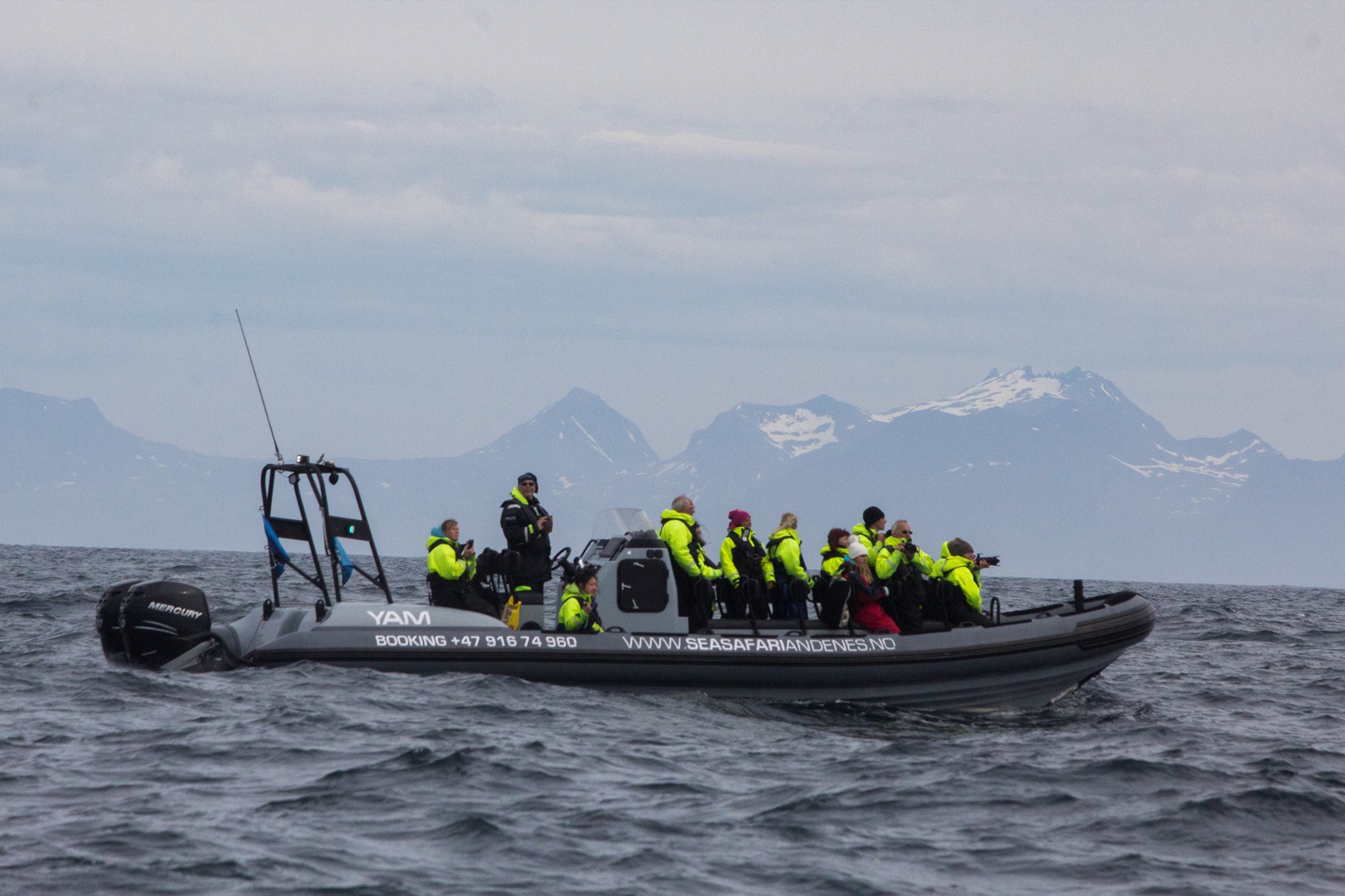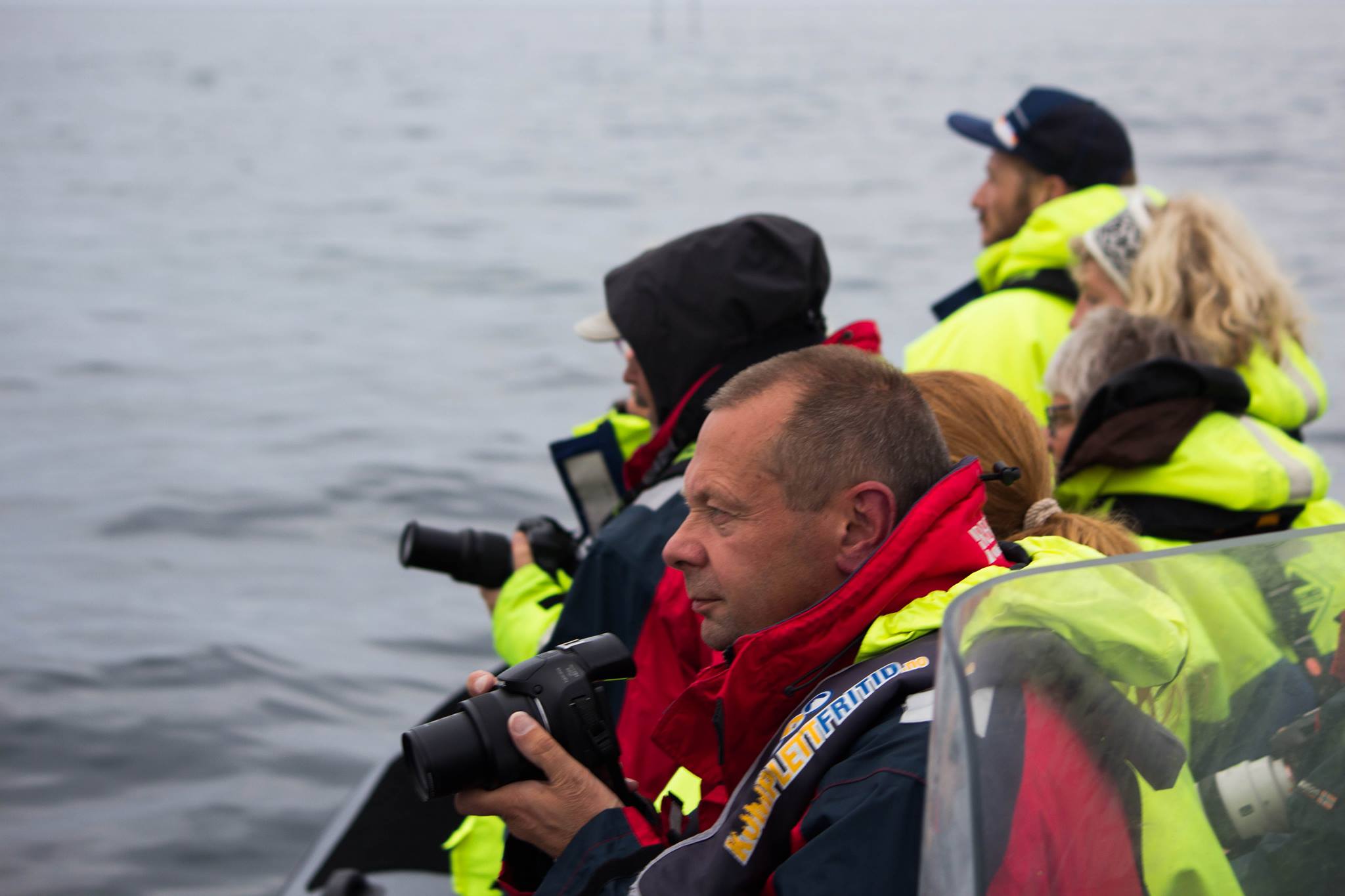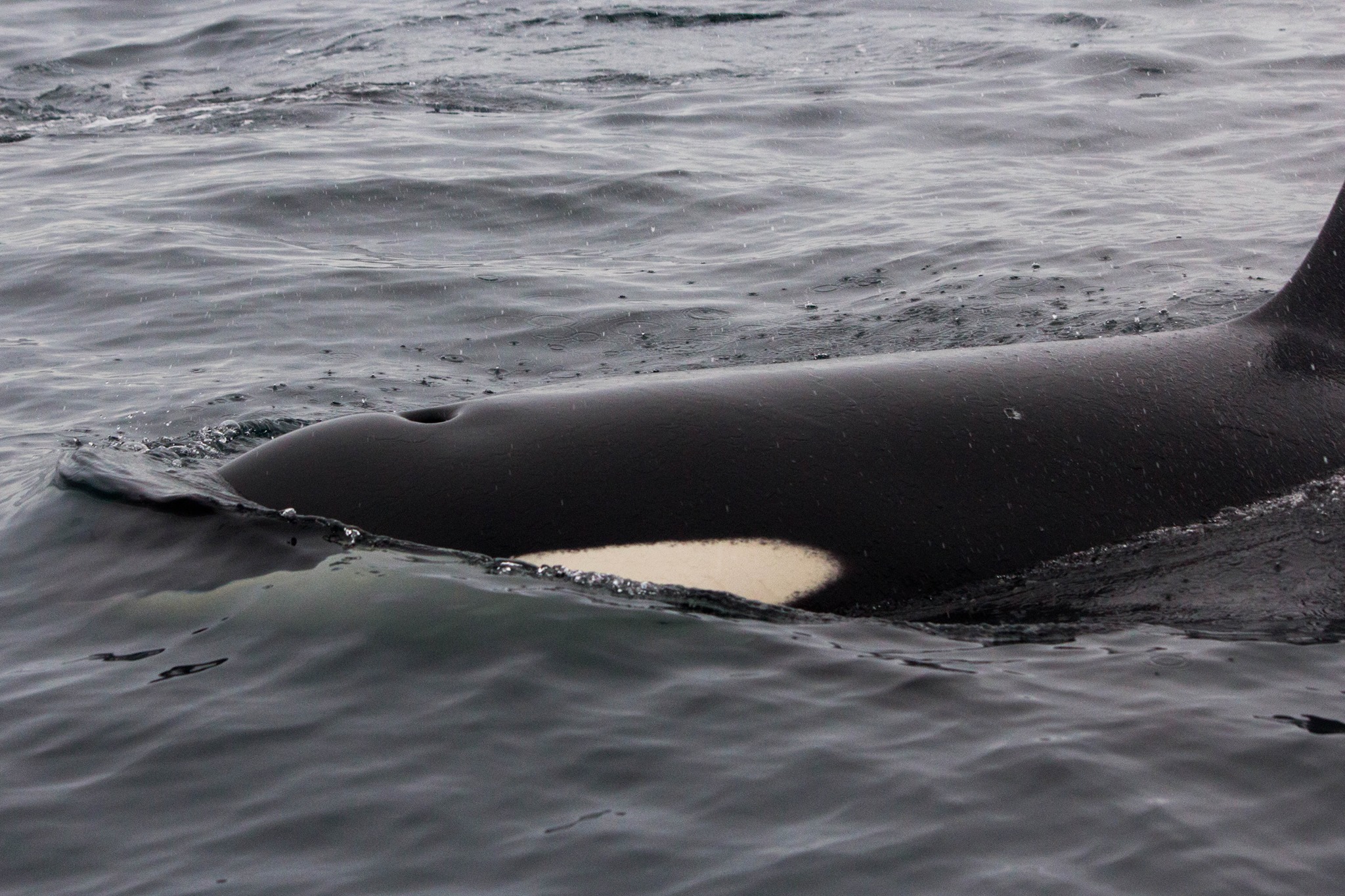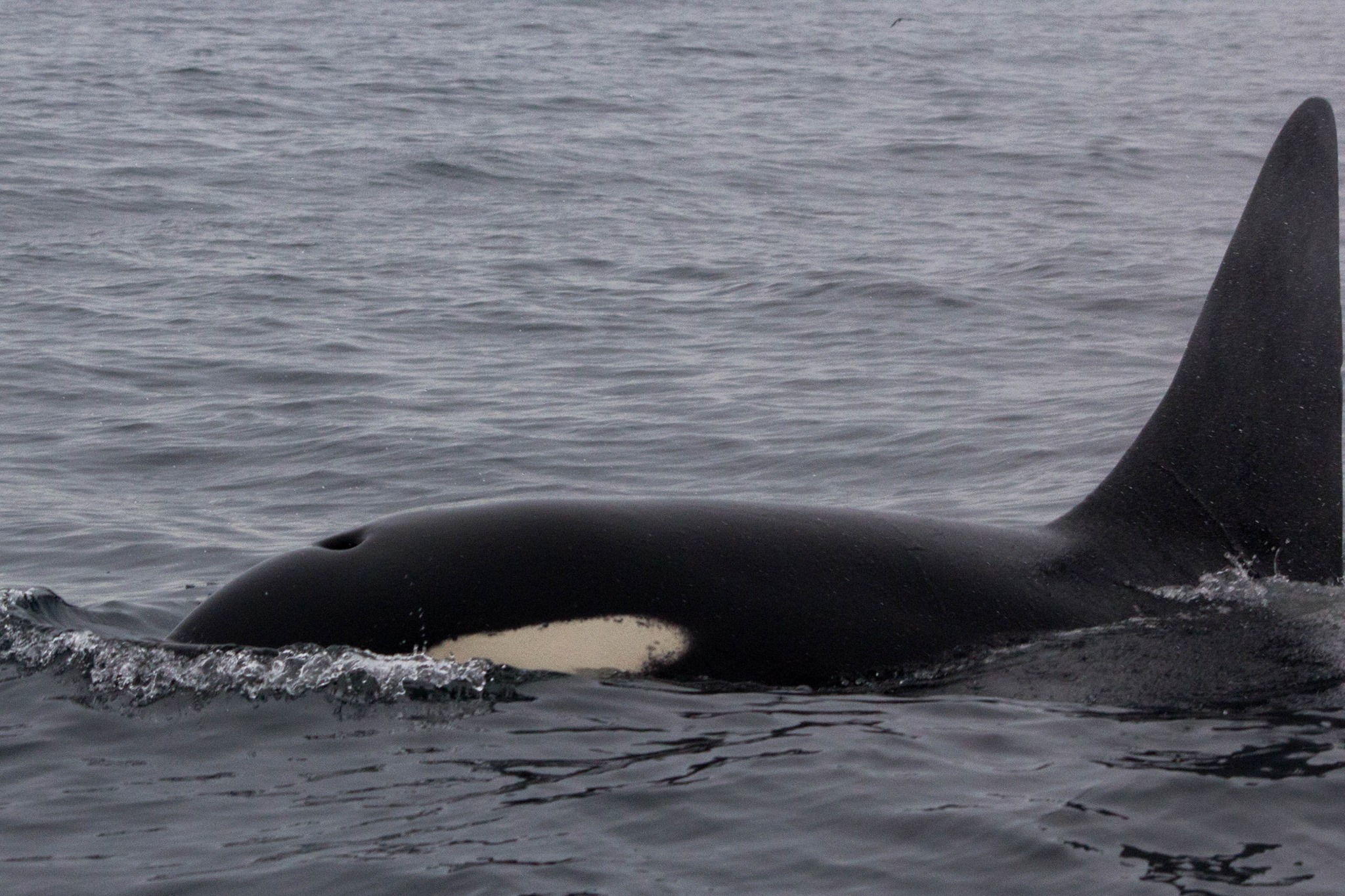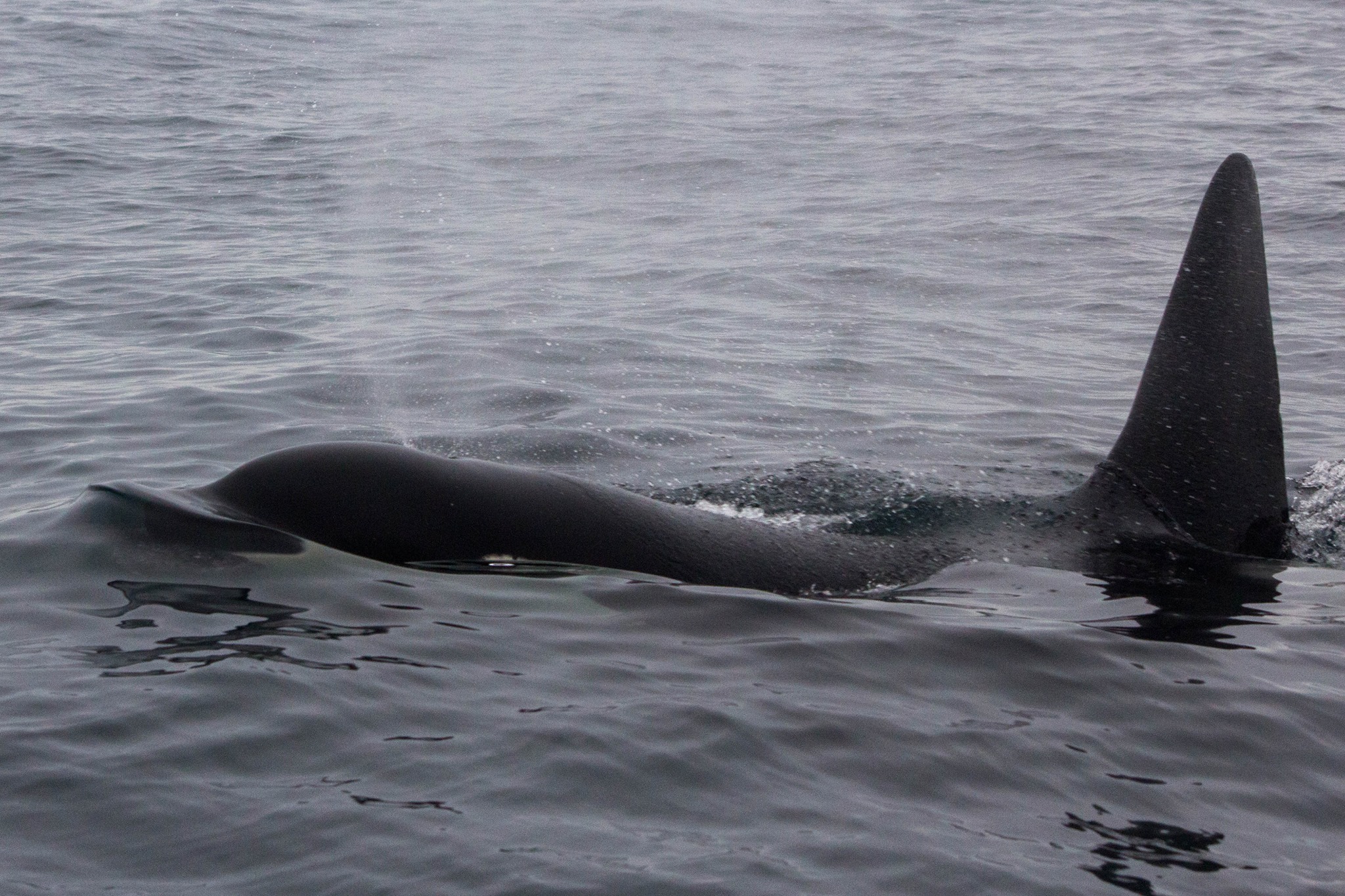On the first of July, Mari was guiding a whale watching trip at Sea Safari Andenes in northern Norway. The team had found a pod of killer whales approaching shore, but little did they know that they were about to get a show of a lifetime.
”It felt like being in the middle of a killing scene of a National Geographic documentary! Completely unbelievable”, one of the tourists says.
Although killer whales are regularly spotted in the area during the winter season, Mari explains that during summer season killer whale sightings are rare and merely occasional happenings.
Only a few pods are known to visit Andenes in summer. In contrast to the winter pods who seem to mainly feed on herring, the summer pods have been spotted preying on other marine mammals such as seals and harbour porpoises as well. However, up until Norwegian Orca Surveys recently published study there has been very little documentation of these groups feeding behaviour and this was a very special event.
The specific pod seen in the video had not been spotted in Andenes before. Throughout this particular day however it had been seen by various observers who reported that the pod has been further off shore, possibly chasing fish in the morning and catching a harbour porpoise closer to shore in the afternoon. When the boat that Mari was guiding went out in the evening the Orcas had come all the way to shore, evidently searching the rocks for seals.
Together with the research team from Norwegian Orca Survey, the visitors and staff from Sea Safari Andenes got a unique opportunity to observe these killer whales in action and see nature in its wildest form..
The Orcas didn’t only come very close to shore but after hunting, catching and killing the seal they came surprisingly close to the boats which were laying neutrally positioned a bit away from the hunting area.
Mari describes what happened:
– They brought the seal towards us and played with it around, under and in between the boats for quite some time. The pushed it in front of them, passed it between them and pressed it down under the surface before they suddenly began throwing it straight up in the air, over and over again just next to the boat. It looked as if they were putting on a show for us – and even if it is very unlikely that they did it on purpose, they definitely did manage to impress everyone onboard!
The behaviour of not directly eating the prey but first seemingly playing around with it for long periods of time possibly serves to teach the juveniles to hunt.
-Orcas have been described as cultural animals by several researchers. They communicate and transmit important knowledge about food sources, hunting techniques and “language” skills across generations. It takes time for young calves to learn the skills necessary for survival, and just like in humans, they seem to depend on older family members to teach these skills to the younger generations.
This day the Orcas were spyhopping (lifting their head and eyes above the water surface, a behaviour connected to curiosity) to take a look at the boats and providing the audience with a spectacular experience that very few people have seen in real life. Some comments from the whale watchers were:
-When the orca went in for the kill and the water splashed… I was shivering of excitement! Incredible!
-I could have never imagined we’d get to see something like this! Adrenaline levels definitely peaked!
In order to not affect the whales behaviour, after a while the boats left the orcas who continued their hunt for hours to come.
-It was surreal to leave the scene while the action was still going on. We were so thrilled that it took quite a while for our energy levels got back down to normal again.
-That’s the magic of this place. Not one day is the next one alike, and you never know what you will see. A couple of weeks ago we had a big group of white sided dolphins, and last week the area was filled with of pilot whales and the other day we had three sperm whales. Some days it seems as if there is nothing out there, and then there is this! It’s absolutely spectacular. This is nature – as fascinating and as raw as it gets, and we are extremely lucky to get to see if from a front row seat.
Watch the video here:
To learn more about the Norwegian Orcas visit www.norwegianorcasurvey.no and to see whales for yourself go to www.seasafariandenes.no. To help protect these magnificent animals and their habitats, get involved with one of your local marine conservation organisations.
